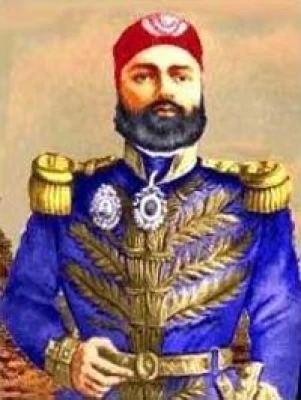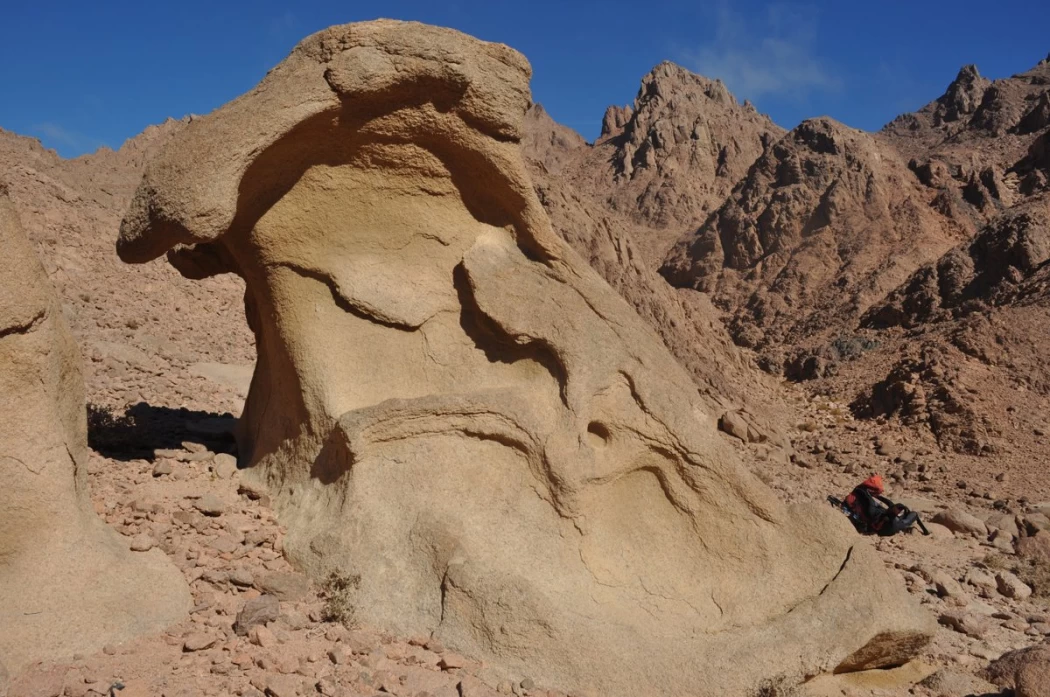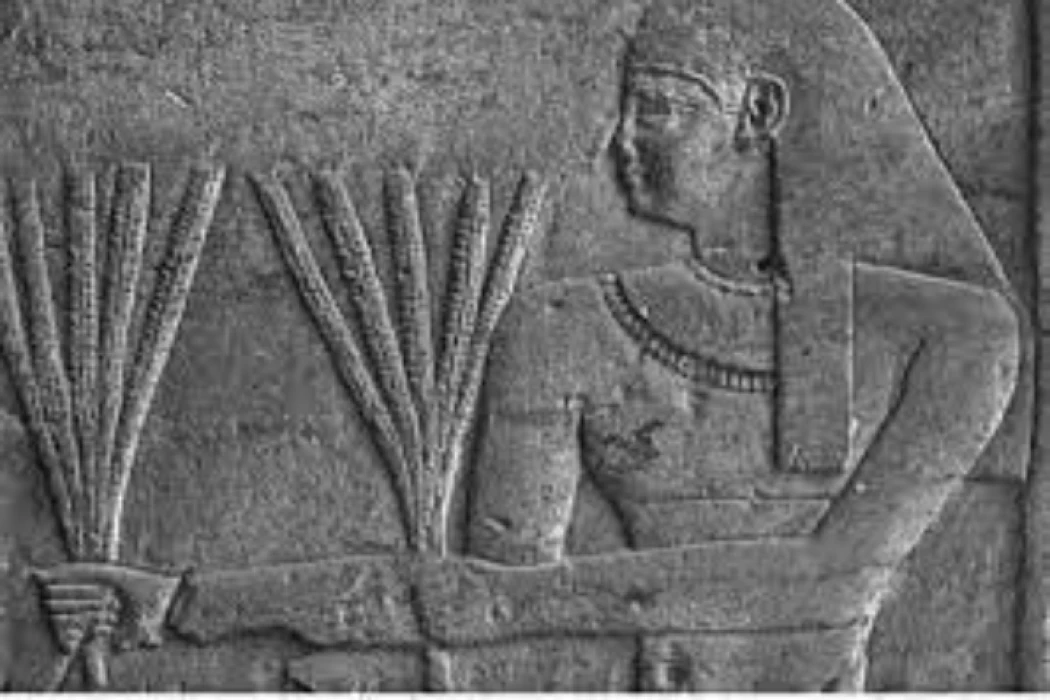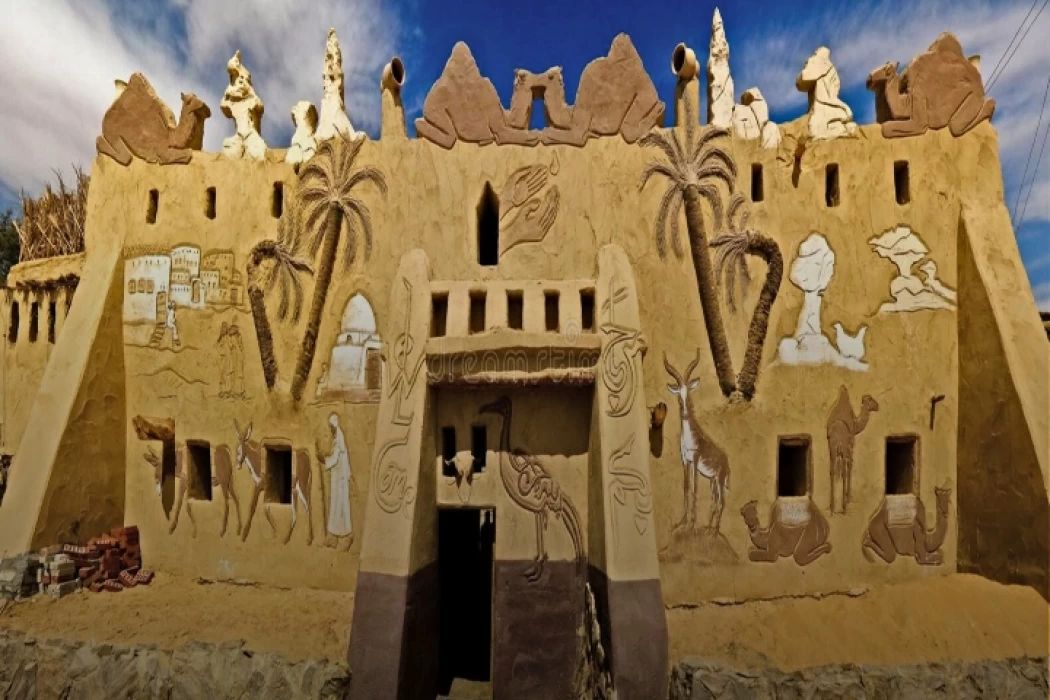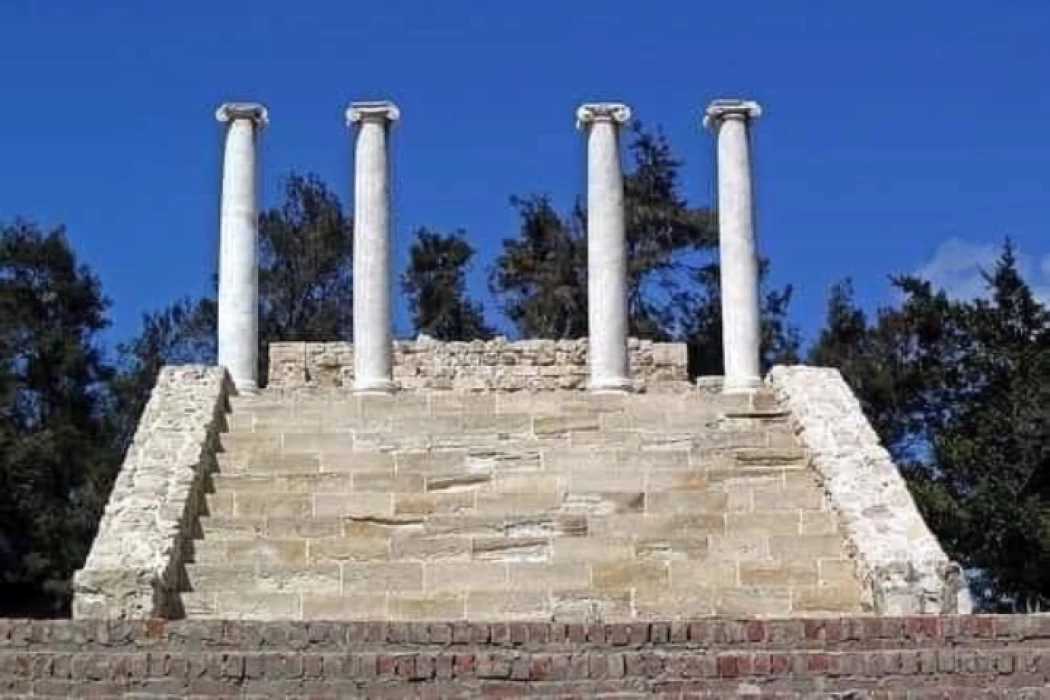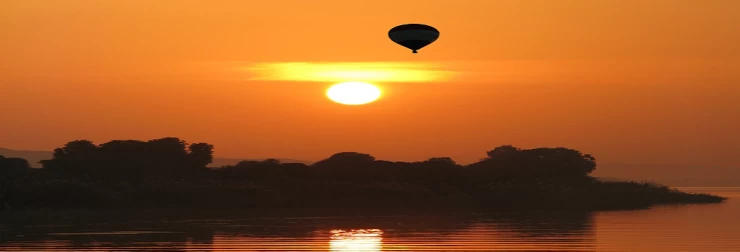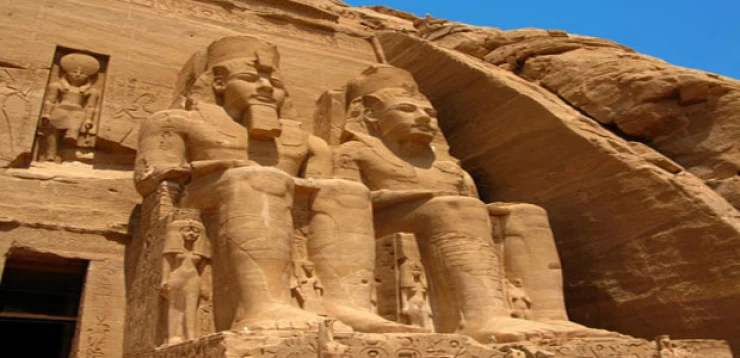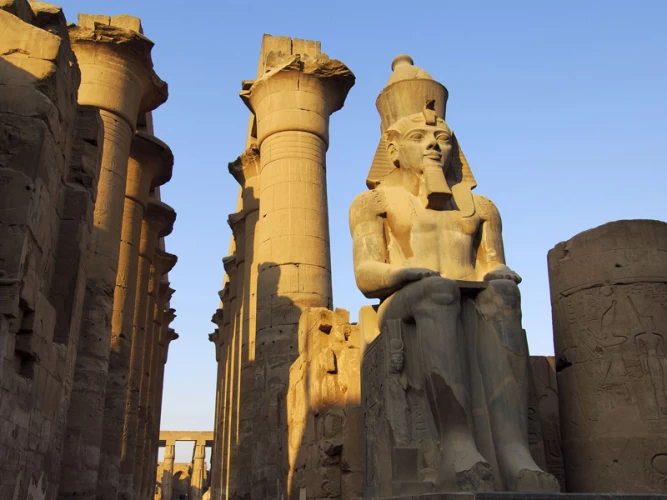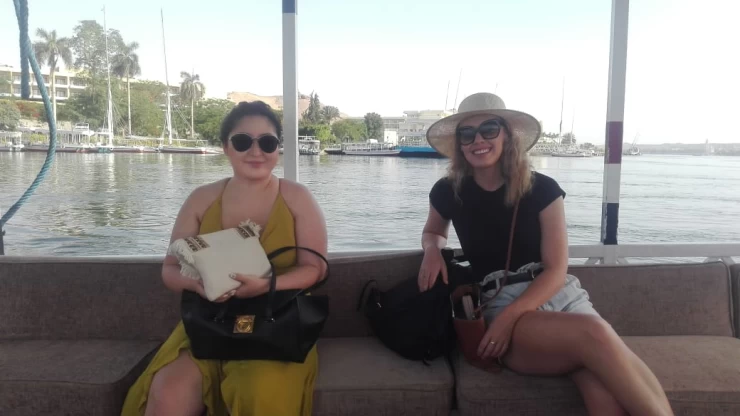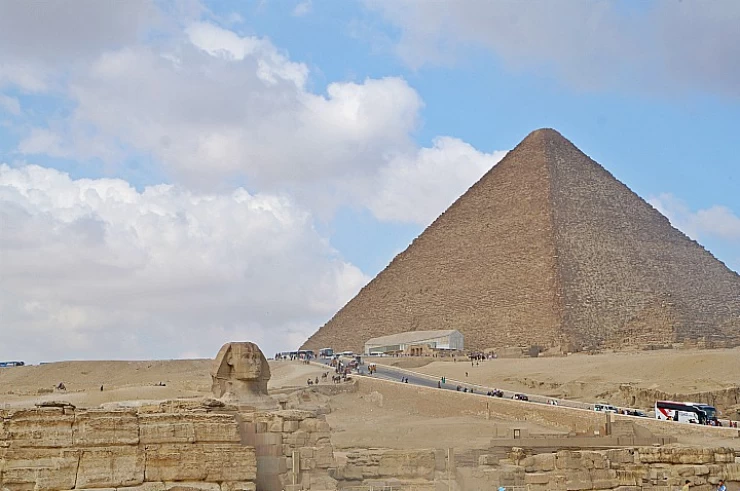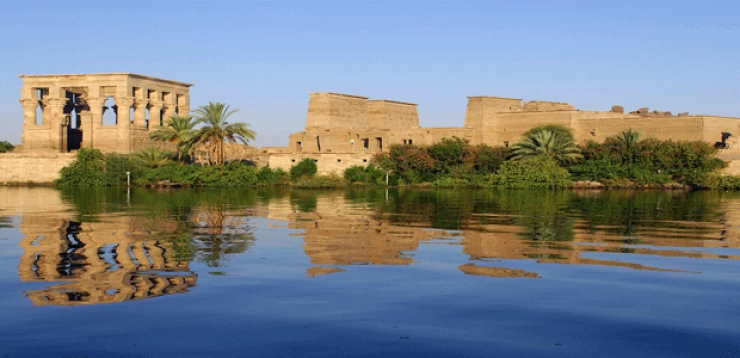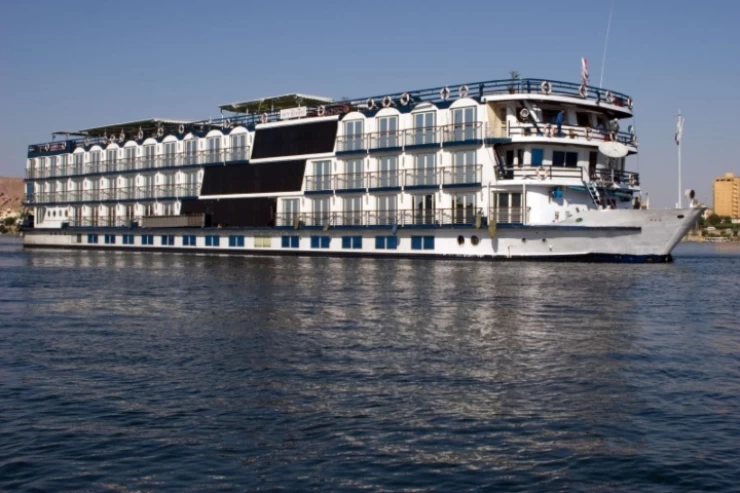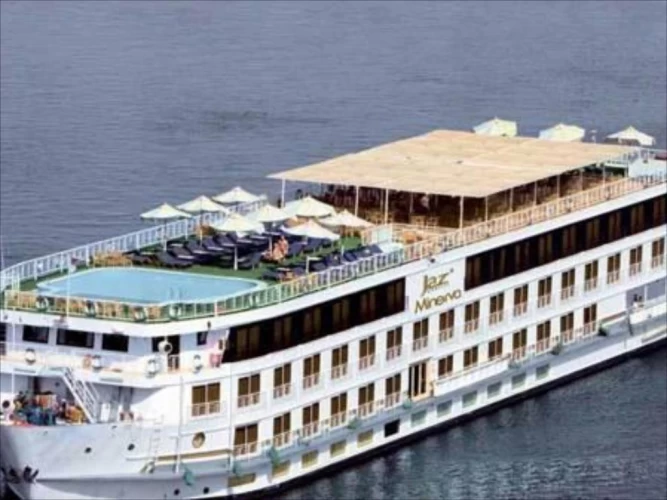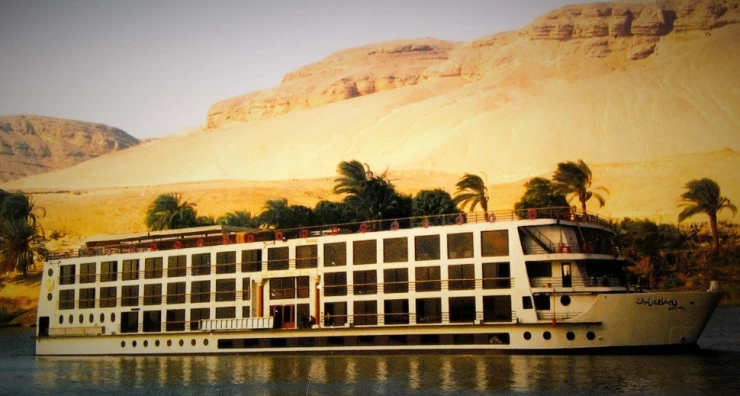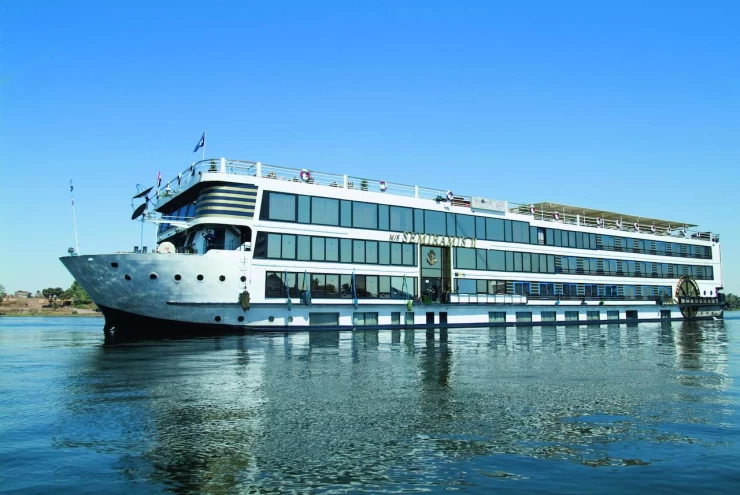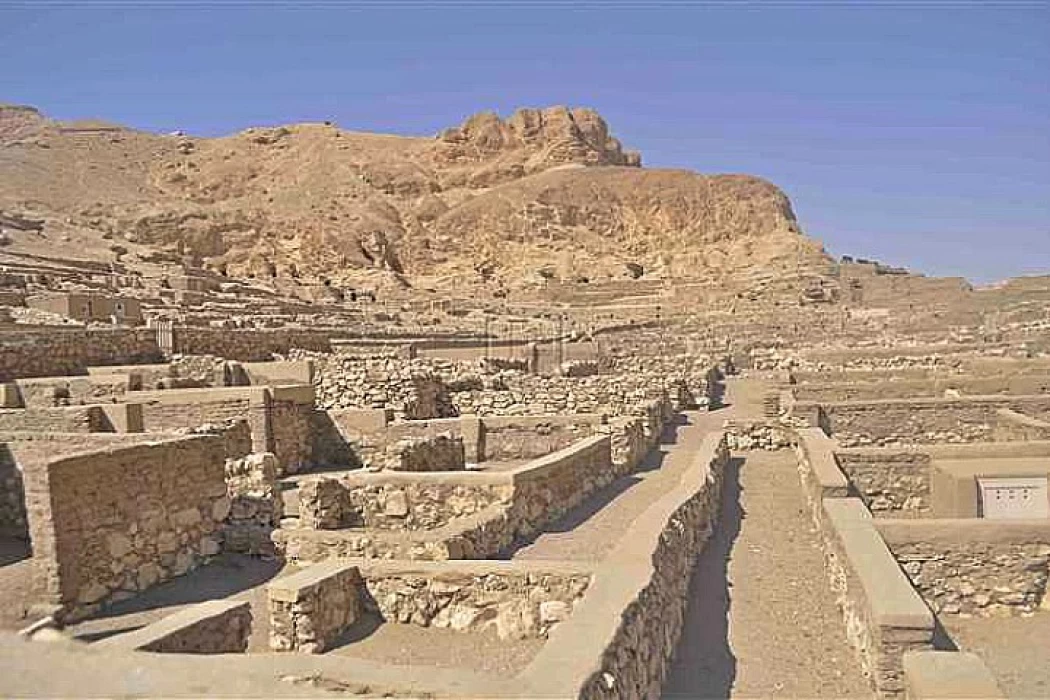
Deir El-Medina in Luxor
Deir el-Medina, in Upper Egypt, is part of the Theban Necropolis in the north of the Valley of the Kings in the Luxor governorate, precisely on the West Bank of the Nile. It was the residence of families of artisan workers during the reign of the Egyptian New Kingdom (1570 - 1070 BC). Some of them were digging and building the tombs of the Pharaohs in the Valley of the Kings. Others were engaged in the manufacture of statues, furniture, and utensils to prepare the Tomb of each pharaoh according to his desire before death. The workers who built the tombs were specialists and artists in designing, excavating, and decorating the walls of the tomb, to be a "palace" to which the Pharaoh could return on occasions after his death. This was the belief of the ancient Egyptians that Pharaoh lived in heaven among the gods, with the possibility of visiting the Earth and its people after his death and even helping them. That is why every worker in one of Pharaoh's buildings worked sincerely and tirelessly, for Pharaoh would take care of him from heaven.
The Deir al-Madina area shows the remains of the Houses of this class of workers and their distinguished families, they lived in these houses cooking their food and raising their children as honored boosters. They were well-off and some of them built a cemetery for him and his wife, such as GA and his wife Marit, the foreman of the old one who built for himself and his wife the cemetery of GA, which is one of the most beautiful graves found near Deir el-Medina (outside the valley of the Kings). The tomb was discovered in 1906 and found with its contents complete and untouched by thieves.
The ancient town of Deir el-Madina arose during the modern state and has the remains of workers ' houses and their families, and their tombs painted with exquisite drawings that give vivid images of their lives and beliefs. A dry-water well was also found nearby. It seems that the well was so dried up in such a distant time that the workers were throwing pottery shards with letters written on them, some of which were painted with what occurs in the imagination of one or the artist. These fragments depict an important aspect of social life and the way workers dealt with each other at this time, and now they serve as a "library" from which we read about their daily lives in the past. Such as letters from loved ones, love letters, complaints, and prayers.
It is believed that this pharaonic village remained the residence of workers and sculptors working in the Valley of the Kings in the period of the 18th dynasty until the 20th Dynasty.
This site was chosen for the Medina monastery on the West Bank of the Nile facing Luxor. It was close to the Valley of the Kings to the north, the funerary temples of Dee to the South-East, and the Valley of the Queens in the West. It is easy to get to work in these places on foot. It is also likely that engineers and workers will choose that City away from the populated areas to keep the secret of the places of the tombs of the Pharaohs.
Temple of Hathor in the city monastery
At the northern end of the city, there is a small temple of the goddess Hathor from the reign of the Batalsa. The Copts of Egypt used it in ancient times as a church to worship God. Therefore, the area is called the city monastery. There are the remains of other small temples, including one built by Seti I and another from the reign of Amenhotep I. A small temple of the god Amun is also located to the east of the temple of Hathor, believed to have been built during the reign of Ramses II.
About 200 meters north of the temple of Hathor there is a dry well, from which about 5,000 pottery sherds were extracted, on which the ancient Egyptians were writing. They include family letters, accounts, plans, drawings, and even recorded court proceedings. These husks helped to form a vivid picture of the life of workers and their families in that time immemorial era.
The workers of the city Monastery received food and water in abundance from the Pharaoh, no matter how important their work related to his future in the other world. They and their families were distinguished among the people. Then came the Iron Age and the weakening of the Pharaohs, which led to instability. The morality conforming to the teachings of Maat (honesty, honesty and decent manners) almost disappeared, because Pharaoh at that era could not provide the workers with food and drink, and hunger began to prevail among the workers and their families, so they objected and went on strike during this difficult time.
During the reign of Ramses III, which lasted about 25 years, manuscripts mention (about 1170 BC) that workers went on strike, and this is considered the first workers ' strike in history. They wrote complaints to the minister for supplying them with the provisions of their lives. They refused to return to their jobs until their demands were met. The overseers responded to their demands and the workers returned to their work. However, the difficulty of obtaining food has not completely disappeared, and the workers ' strikes have been repeated. The last years of Ramses III's reign were years of drought and instability. In addition to the attack of the so-called Sea Peoples on Egypt from its northern coasts (it is believed that they were coming from Sicily, Italy, and the country of the Greeks), the pharaoh of Egypt fought them hard, and then he managed to drive them away from Egypt by inviting them to enter Palestine.
Due to the alliance of the overseers with the rulers, the workers of Deir el-Medina no longer believed in their promises, and they chose from among them those who would take care of their affairs. The manuscripts mention that the unrest and instability occurred again for 40 or 45 years after the first strike, and this was during the reign of Ramesses IX and Ramesses X.
Grave robbery
After the reign of Ramses IV (about 1155 to 1149 BC), the problems of drought and lack of food did not end. Groups of unemployed workers were formed to rob the tombs of the Pharaohs and the riches of the dead in them. They dug side tunnels away from the guards until they reached the chambers full of precious ornaments and gold. Some of the overseers also shared with them any "bribes" they received from them. Some manuscripts list what the authorities were doing with these gangs. She interrogated the perpetrators with torture to reveal all the participants in the grave robberies. The penalties were severe. However, the stolen items were not returned to the grave from which they were taken, so the tribunal included them in its wealth.
The researchers were able to remove sand from 68 of the foundations of houses. Among them is the necropolis of senjum, which was found by the French researcher Gaston Maspero on February 2, 1886. That cemetery today bears the symbol TT1, that is, the cemetery in Thebes No. 1 . Also found near that area was the Tomb of GA, The Overseer of the workers of the city monastery. This tomb was found by an Italian researcher in 1906, and it was full of Contents and gold ornaments. The Tomb of GA is symbolized by the symbol "tt8", and the contents and mummies of "GA" and another of his wife "Meret" were transported to Italy and today form an important part of the Egyptian Museum in Turin.
Latest Articles
Admin
Regin of Abbas I of Egypt | Abbas Pasha I
Abbas has been often described as a mere voluptuary, but Nubar Pasha spoke of him as a true gentleman of the "old school". He was seen as reactionary, morose and taciturn, and spent nearly all his time in his palace. He undid, as far as lay in his power, the works of his grandfather, both good and bad.
Admin
Story of Gabal Shayeb Al Banat - Red Sea Mountain
Jabal shayb al-banat is one of the Red Sea Mountains in the eastern desert in Egypt, located to the west of the city of Hurghada at a latitude of 27 degrees north and a longitude of 33.5 degrees east of the Greenwich line approximately, this mountain is the highest mountain peak in the eastern desert with a height of up to 2185 meters, it is a prominent mass of igneous rocks
Admin
Neper God Of Grain
Neper was the deity of grains, particularly cereals that were important in Ancient Egypt, such as wheat and barley. It was stated that he foretold when the crops would grow, be harvested, and disappear.
Admin
Badr Museum in Farafra
The Badr Museum is located in a mud building, which is the common home found in this medieval part of Egypt. All of the artwork that was created by the artist is quite unique. His work almost always depicts life in the Farafra Oasis and he provides the work through both painting and sculpting.
Admin
The Black Head Temple
The Black Head Temple is a small temple dedicated to the worship of the goddess Isis and was discovered in 1936, by chance, in the Black Head area, which is now located within the Mandara area of the Montazah district in Alexandria. This temple was moved from its original place to the Latin Necropolis in 1994.
Admin
The Queen Tetisheri
Tetisheri was the mother of Seqenenre Tao, Queen Ahhotep I, and possibly Kamose. For sure, she was the mother of Satdjehuty/Satibu, as attested on the rishi coffin of the latter. At Abydos, her grandson King Ahmose I erected a Stela of Queen Tetisheri to announce the construction of a pyramid and a "house" for Tetisheri.
